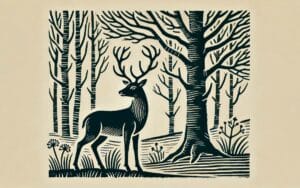Hedgehogs, despite being cute, have always had a pretty bad reputation in the UK and Ireland. Let’s delve into 10 strange facts about hedgehog superstitions over the years.

The hedgehog, with its quills and curious nature, has been a fixture in many cultures’ folklore and superstitions. Though revered in places like ancient Egypt, the hedgehog has carried a more mixed reputation in the UK and Ireland.
Hedgehog superstitions and folklore facts
Hedgehog means “Little Ugly Thing” in Irish Gaelic
In the Irish language, the hedgehog is referred to as Gráinneog, translating to “little ugly thing”. It’s interesting to think that a creature now considered so cute was once viewed in such a light.
They were considered thieves in medieval times
In medieval Britain, farmers believed that hedgehogs were milk thieves. Legend had it that these creatures sucked milk from cows during the night time. This folklore extended to the hedgehog stealing eggs, although this claim had a grain of truth. Hedgehogs did consume eggs, but usually, those that were already cracked or damaged.
Many considered hedgehogs witches in disguise
The mysterious nature of hedgehogs led many in Britain to believe they were witches transformed. This superstition grew to such an extent that there was a campaign to eradicate hedgehogs. Both the English Parliament and the Church backed this, with bounties placed on the creatures in 1566.
People thought hedgehogs could predict the weather
The hedgehog was considered a weather prophet in the UK. Observing the direction in which a hedgehog built its nest could indicate the forthcoming wind direction, as mentioned in Poor Robin’s Almanac for 1733.
Hedgehogs, a strange cure for fits?
An unusual remedy for fits in older British traditions was consuming cooked hedgehog. Many considered the flesh a delicacy. Other believed medical benefits included using the hedgehog’s left eye ‘pil’ for strengthening weak eyes or its jawbone for curing rheumatism.
Bonfire are a danger to hedgehogs
Bonfire Night, celebrated on 5 November each, became a threat to hibernating hedgehogs in Britain. Many would nest in the wood piles set for burning. Television campaigns now warn the public to check bonfires for these creatures before igniting them.
They don’t gather apples or mushrooms on their backs
There’s an long-held and enduring belief that hedgehogs collect apples and mushrooms, impaling them on their spines to carry to their dens. While ancient sources like Pliny the Elder mentioned such behaviours, in truth, hedgehogs do not gather food in this manner.
Ancient Egyptian treated them better than we do
Moving briefly away from the Spooky Isles, ancient Egyptians saw the hedgehog in a positive light, akin to the revered scarab beetle. The hedgehog was a symbol of rebirth, stemming from their hibernation habits, leading many to believe they had risen from the dead.
Hedgehog reputation differs across the world
It’s fascinating to note the global perceptions of hedgehogs. From Mongolian beliefs of them being symbols of ill fortune to Balkan legends showcasing their wisdom and cunning, the hedgehog’s reputation varies widely across cultures.
Hedgehogs numbers are decreasing but there’s a fightback
Today, hedgehog numbers are decreasing in the UK. The British Action Plan is actively working to protect this species, encouraging the public to drive slowly and report hedgehog sightings. Each May, Hedgehog Awareness Week is celebrated to raise support for the creature’s conservation.
Did we miss any Hedgehog superstitions or folklore in this article? Tell us in the comments section below!






